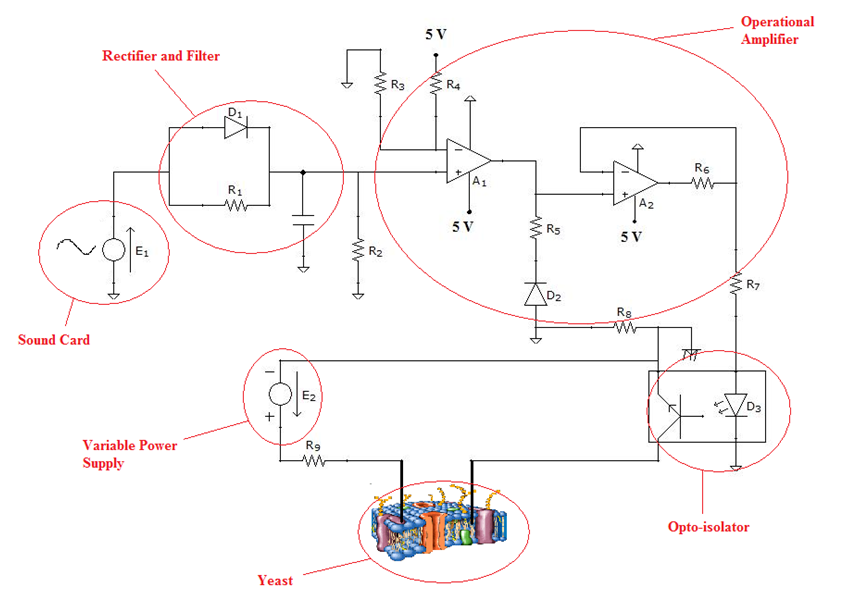Team:Valencia/Hardware
LEC activation
Our team prides itself in finding ways to link electronics to biology in a direct and innovative fashion. As a consequence we spent considerable time developing circuits and equipment allowing for quick and robust control of cellular physiology.
Electrostimulation for yeast
Our team has developed an electronic circuit capable of applying a voltage between 0 V and 24 V with a precision of 0.1 volts and during time intervals of up to 20 ms. to yeast cultures. This circuit has been used in a first stage to characterize the part [http://partsregistry.org/wiki/index.php?title=Part:BBa_K222000 BBa_K222000] or what we call LEC. In the characterization, this system supplies the initial estimulation conditions for the cells for the different experiments very precisely, making the results obtained with the luminometer of great confidence.
The experimental device is composed of the following parts:
- The first one is made of a voltage source and two electrodes to stimulate the cultures.
- The second one is an optocoupler performing the function of an electronic switch. It is composed of a led diode and a phototransistor. The phototransistor will allow to voltage signal while the diode is illuminated.
- The last part is the responsible of the fine control of the time period in which the voltage is applied. To do that we stimulate the diode with a PC sound card (it has a precise voltage signal that is transformed by the loudspeakers to reproduce sound) controlled by the function “sound” of the MatLab software.
The output signal of the sound card was modified by a rectifier-filter and then passed through two operational amplifiers (one as an amplifier and the other as a tension follower) in order to produce a very precise signal able to activate the optocoupler. The amplifiers are powered by 5 volts and ground, so we will have 5 volts at the output of the operational when the sound card is active, and 0 volts when idle.
This design allows the stimulus of one channel, one LEC. In order to make a working screen, we will need an array of electrodes connected to a multiplexer. For that, see the next section...
 "
"
